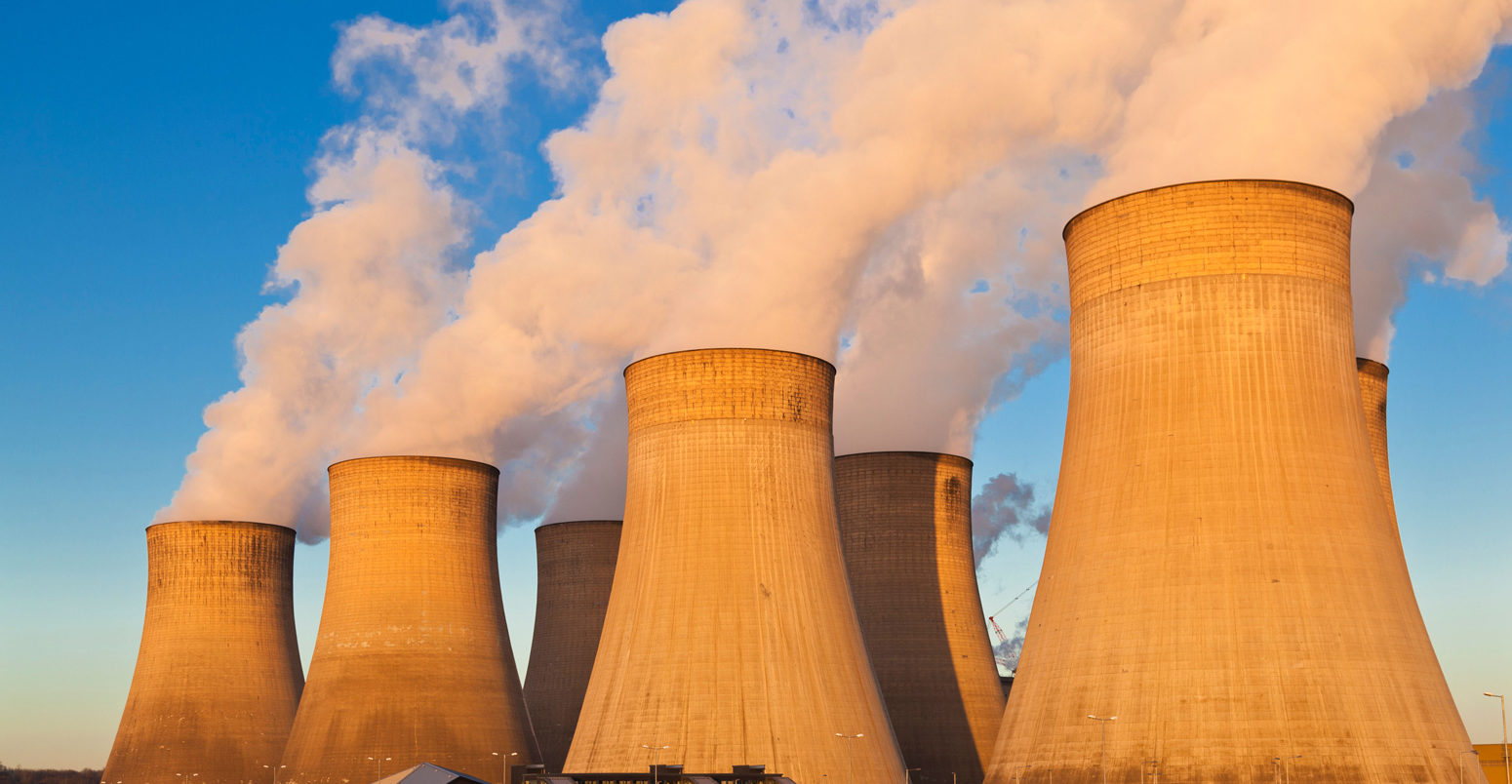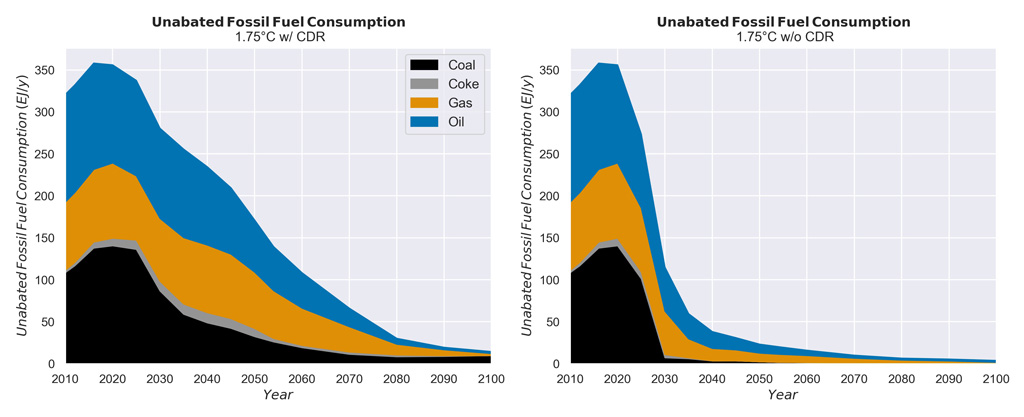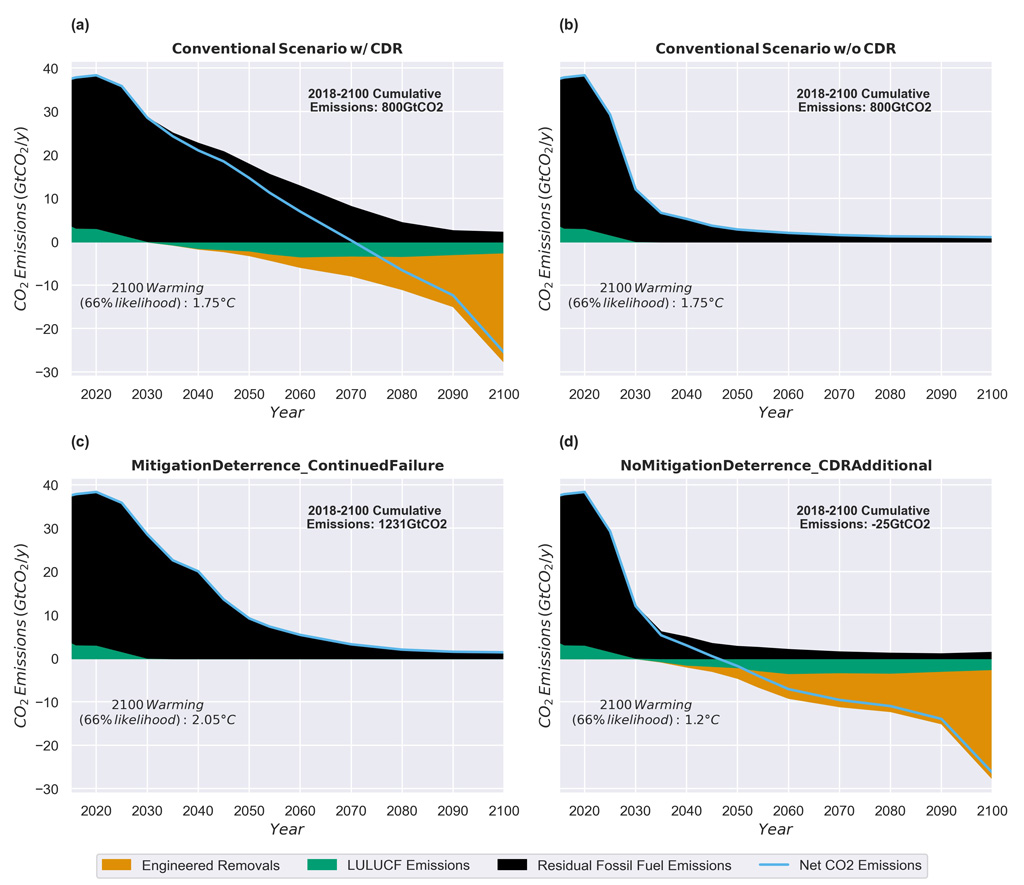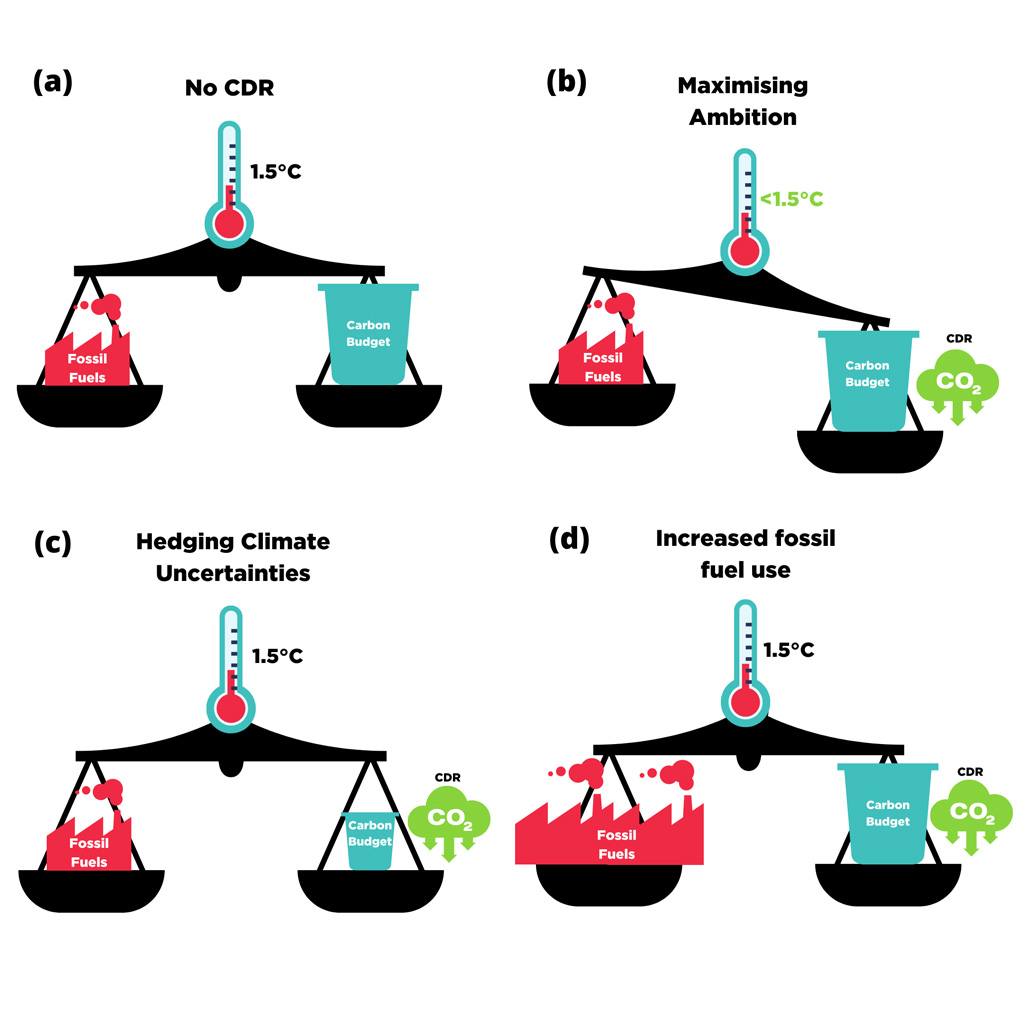
Guest post: Emissions should fall ‘twice as fast’ in case negative emissions fail

Guest authors
06.28.21
Guest authors
28.06.2021 | 8:00amMany model pathways designed to meet the climate goals of the Paris Agreement rely heavily on large-scale carbon dioxide removal (CDR), also known as “negative emissions”.
This has prompted concerns that the promise of being able to use CDR in the future might dilute incentives to cut fossil fuel use today, a phenomenon known as “mitigation deterrence”.
Heavy reliance on negative emissions is problematic because the feasibility of large-scale CDR is highly uncertain. The promise of carbon removal could be used to delay or deter action in the present, but it could then fail to show up at scale when needed.
In new research published in Environmental Research Letters, we explore the implications of uncertainty over whether CDR will become available as expected.
Our analysis finds emissions should be cut twice as fast during the 2020s to keep warming “well-below” 2C while insuring against CDR failure, even if the chances of non-delivery are small.
Mitigation deterrence
In our research, we distinguish between mitigation – meaning action to reduce carbon dioxide (CO2) emissions – and CDR, which aims to remove CO2 from the atmosphere.
Mitigation refers to actions that prevent CO2 from being released in the first place, such as replacing coal-fired power stations with wind turbines. CDR refers to actions that “suck” CO2 out of the atmosphere after it has been emitted, such as afforestation or direct air capture.
In our paper, we explore two ways that CDR could be used to substitute for mitigation, creating the potential risk of mitigation deterrence. Most existing scenarios use CDR for two reasons:
- To compensate for any “overshoot” in the carbon budget and bring temperatures back to target levels via net-negative emissions. We call this intertemporal mitigation deterrence – long-term CDR compensating for insufficient near-term action.
- To facilitate continued emissions in the long-term from sectors which are deemed “hard” to abate, such as aviation or shipping. We call this sectoral mitigation deterrence – CDR enables one sector to do less in reducing emissions than others.
Limiting warming without either of these options would require greater near-term action to avoid temperature overshoot, as well as a deeper phase-out of fossil fuels in the long term.
Our analysis suggests that it is only possible to limit warming to “well-below” 2C without CDR with urgent action now. We found that CO2 emissions would need to fall to around 12bn tonnes (GtCO2) per year by 2030, a 70% decline from today’s levels.
For a scenario that makes use of CDR, the decline in fossil fuel use and CO2 emissions is much smaller, requiring only a cut of 30% across the decade to keep warming “well below” 2C by 2100.
These alternative pathways are illustrated in the figure below, showing unabated use of coal (black), gas (yellow) and oil (blue) in the CDR scenario (left) and the no-CDR route (right).

The no-CDR pathway would involve ambitious action including deployment of 1,000 gigawatts (GW) of new renewable capacity per year by the mid-2020s, a four-fold increase from 2020 rates.
It also includes a much greater reduction in demand for polluting activities, such as aviation, and greater use of low-carbon fuels, such as hydrogen, to push fossil fuels out of the energy system.
Risk of failure
Researchers developing pathways towards meeting a given temperature target typically use integrated assessment models (IAMs), which draw on a series of assumptions. Among these assumptions are the future cost and availability of technologies for tackling climate change.
These assumptions can be highly influential in terms of the climate decisions taken in the 2020s, as we saw above in the case of CDR.
In reality, future CDR availability is inherently uncertain, as it has not been deployed at scale. Nevertheless, most published scenarios fail to account for this uncertainty because they are “deterministic”, meaning all future variables are assumed to be known with perfect certainty.
This means that the model calculations for 2020 proceed in the context of perfect knowledge of how much CDR will be available in 2030, 2040 and so on.
This approach is poorly matched with the real-world context of policymakers, who have to make choices today under deep uncertainty around how much CDR will be available in the future.
In our research, we used an approach called “stochastic optimisation” to explicitly represent the potential for CDR failure in our scenarios.
Rather than only considering one future, where all variables are known with certainty, this technique forces the model to consider multiple future possibilities – futures in which large-scale CDR can be successfully deployed and futures in which CDR fails to be deployed. The model then has to hedge its bets and account for the real possibility that CDR will not be available.
Our analysis shows that introducing uncertainty in future CDR availability leads to a significant increase in mitigation action over the 2020s. If the model knows that CDR might not be successfully deployed it increases emission cuts now to insure against this possibility.
The relationship between the probability of successful CDR deployment and the level of mitigation action taken is also highly “convex” – namely, it is not a straight line and is skewed towards near-term mitigation action as part of its hedging strategy. This means that, even if the chance of CDR failure is only 10%, there is a relatively large uptick in near-term mitigation action.
These results are shown in the figure below, where 2C scenarios are shown on the top row and “well-below” 2C pathways are shown in the bottom row. The left-hand charts show how emissions by 2030 change as the probability of CDR being successfully deployed increases and the right-hand charts show the related level of investment in mitigation.
We found that as policymakers’ ambition increases (bottom row) and as their “risk-aversion” increases (orange lines), these risk-action curves become much steeper.

Taking the example of a 1.75C scenario – roughly equivalent to “well-below” 2C – even a 10% chance of CDR failure leads to the model cutting emissions more than twice as fast over the 2020s, reaching a 70% reduction by 2030 rather than a 30% reduction.
Our results suggest that policymakers should aim for higher levels of ambition in the near term, to insure against the risk that CDR may not become available at scale in the long term.
Excess warming
This analysis clearly shows that it is risky to bet on future carbon removal and that scenarios which fail to account for uncertainty in future CDR availability could be underplaying the urgency of action now.
We also show that in existing scenarios, greater CDR deployment leads to greater fossil fuel use, illustrated again in the top two charts in the figure below.
We used two further scenarios to explore what would happen to fossil fuel use, emissions and temperatures, if policymakers made different assumptions around the availability and use of CDR.
In one scenario, shown in the lower left chart, policymakers assume that CDR will be available within the next decade. However, it continues to fail, always remaining just over the time horizon.
In this scenario, where CDR continually deters mitigation, but fails to deliver, emissions would breach the carbon budget by more than 400GtCO2, leading to an excess temperature rise of around 0.3C. This demonstrates the real and considerable risks of mitigation deterrence.

In our second scenario, shown in the bottom right chart above, policymakers prevent CDR from substituting for emissions cuts by treating mitigation and CDR separately. This echoes calls from some experts to have separate targets for reducing emissions and removing emissions.
Here, countries cut emissions on the assumption that CDR may not be available, but use it as an additional strategy if it does become a viable option.
In this scenario, cumulative emissions over the rest of the century could be below zero, meaning more CO2 is removed from the atmosphere than is added. This results in warming by 2100 of much less than 1.5C and close to today’s levels of 1.2C.
This would be a first step towards a “restoration” scenario that aims to return CO2 concentrations from their current levels towards a safer zone, such as 350ppm. Such a scenario requires that CDR is additional to, rather than a replacement for, emission reductions.
The appropriate role for CDR
Tackling climate change involves balancing the temperature scales, with our remaining carbon budget on one side and our future emissions on the other (panel (a) on the stylised figure below).
If we burn more fossil fuels than the carbon budget allows, the scales will tip and the world will overshoot the temperature target. CDR could feature in this equation in three different ways.
First, it could be used to tip the scales towards lower temperature targets, as in the “restoration” scenario discussed above. Here, CDR is used in addition to mitigation sufficient for limiting warming to 1.5C. The figure below shows this in panel (b).

Secondly, CDR could be used to insure against the risk that the remaining carbon budget is smaller than expected. This is shown on panel (c) of the figure.
Finally, CDR could be used to allow continued consumption of fossil fuels on the road to net-zero, smoothing the transition by balancing residual emissions, as in panel (d) of the figure.
This is the way CDR is used in most model scenarios. As our research shows, this approach risks tipping the scales the wrong way if CDR fails to be deployed.
These risks can be avoided, but only if policymakers take more urgent action now.
Grant N, Hawkes A, Mittal S and Gambhir A (2021). Confronting Mitigation Deterrence in Low-Carbon Scenarios. Environmental Research Letters doi.org/10.1088/1748-9326/ac0749
-
Guest post: Emissions should fall ‘twice as fast’ in case negative emissions fail

